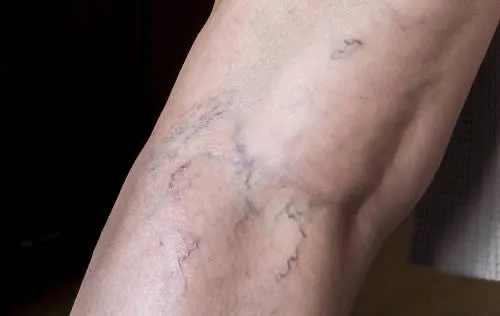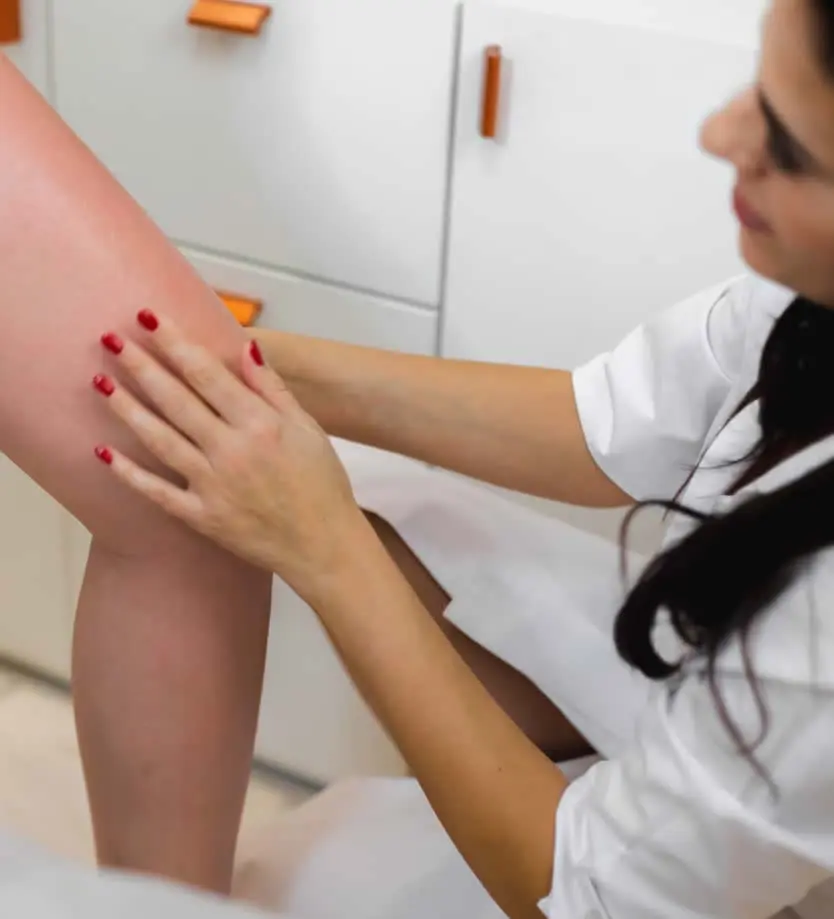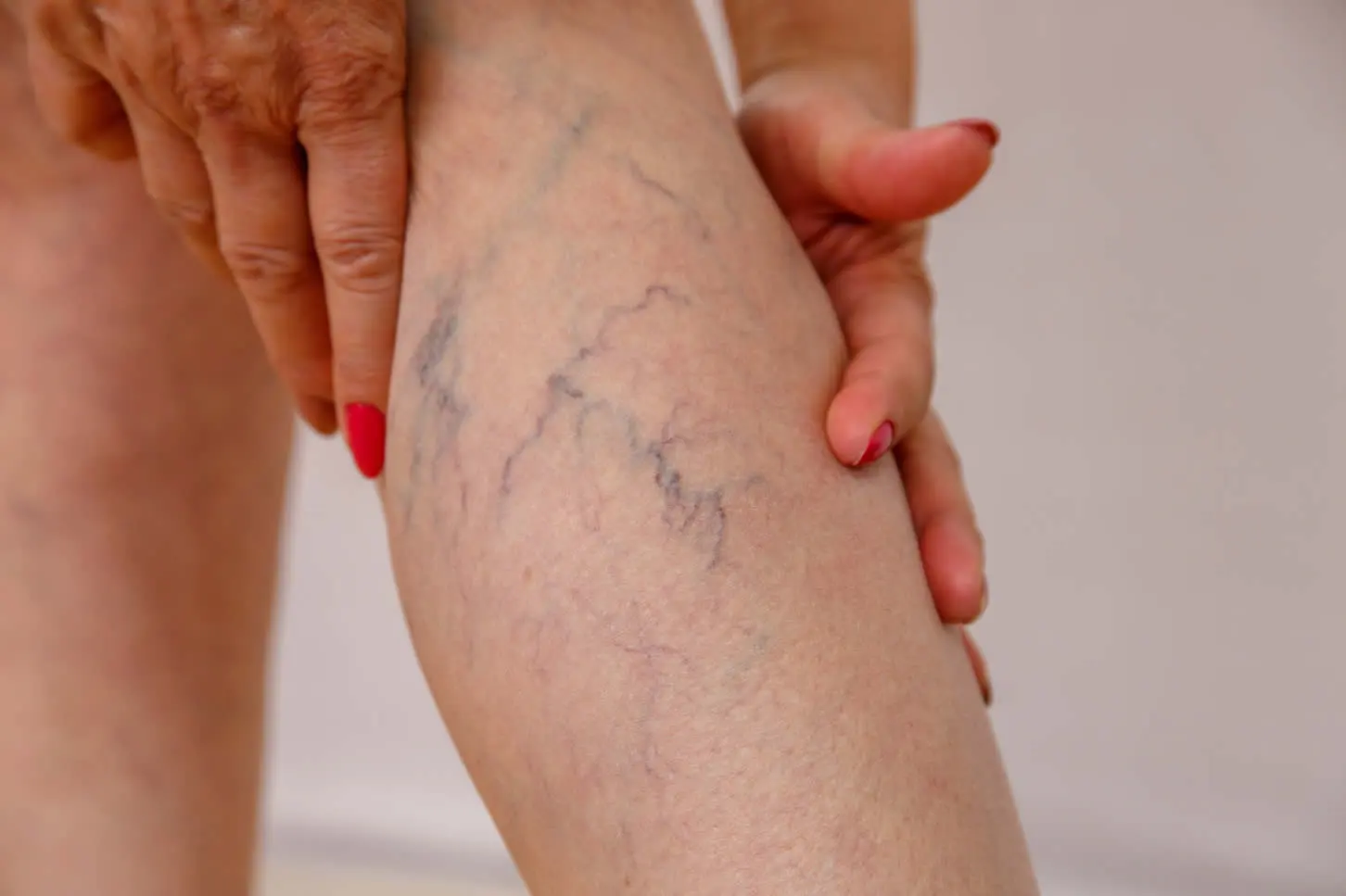What are Spider Veins?
Spider veins, also known as telangiectasias, are small, visible blood vessels that appear near the surface of the skin. These veins often take on the appearance of fine, branching lines that can be red, blue, or purple in color. While they are generally harmless, their presence can cause cosmetic concerns for many individuals.
Spider veins are a type of blood vessel abnormality that occurs when tiny veins near the skin’s surface dilate and become more visible. They differ from varicose veins, which are larger, swollen veins that often bulge and may cause discomfort. Spider veins are typically smaller in size and are more commonly found on the legs, face, and other parts of the body.

Causes and Risk Factors
Understanding the causes and risk factors can help shed light on why they occur and who might be more susceptible.
Common Causes:
- Genetics: Family history plays a significant role in the development of spider veins. If your parents or grandparents had them, you might be more prone to developing them as well.
- Age: As we age, the natural wear and tear on our veins can cause them to weaken, leading to the formation of spider veins.
- Hormonal Changes: Hormonal fluctuations during pregnancy, menopause, or as a result of hormone-based medications can contribute to the appearance of spider veins.
- Sun Exposure: Prolonged and unprotected sun exposure can damage the skin and blood vessels, increasing the risk of spider veins.
Risk Factors:
- Gender: Women are more likely to develop spider veins than men. Hormonal changes associated with pregnancy, birth control use, and hormone therapy contribute to this increased risk.
- Occupation and Lifestyle: Jobs that require prolonged periods of standing or sitting, such as nursing or office work, can increase the risk of developing spider veins. Conversely, regular physical activity can help maintain healthy blood circulation.
- Obesity: Excess weight places added pressure on the veins, making it more difficult for blood to flow properly, which can lead to the development of spider veins.
- History of Blood Clots: Individuals with a history of blood clots or venous insufficiency are at an elevated risk of developing spider veins.
- Previous Trauma: Injury to the skin or veins, such as from previous surgeries, injuries, or even aggressive scrubbing, can trigger the appearance of spider veins.
Symptoms and Discomfort
Spider veins may be considered a cosmetic issue, but they can occasionally bring about discomfort and other mild symptoms. While many individuals with spider veins experience no adverse effects, it’s important to recognize the potential symptoms and discomfort associated with these visible blood vessels. Understanding these aspects can help individuals make informed decisions about seeking treatment and managing their condition effectively.
Common Symptoms:
Spider veins are typically characterized by their thin, web-like appearance on the skin’s surface. However, some individuals may notice additional sensations and symptoms:
- Aching and Discomfort: In some cases, spider veins can lead to sensations of aching, throbbing, or mild discomfort, particularly after prolonged periods of standing or sitting.
- Itching: Itchiness or a crawling sensation around the area of spider veins might occur, though this is less common.
- Burning Sensation: A mild burning sensation can occasionally be felt near the site of spider veins.
- Skin Sensitivity: The skin around spider veins may become more sensitive, potentially causing mild tenderness.
Factors Influencing Symptoms:
The intensity of symptoms can vary widely from person to person. Some factors that might influence the presence of symptoms include:
- Location: Spider veins on certain areas of the body, such as the legs, might be more likely to cause discomfort due to the effects of gravity.
- Number and Size: The number and size of spider veins present can contribute to the extent of discomfort experienced.
- Activity Level: Individuals who engage in activities that involve prolonged standing or sitting may be more prone to experiencing discomfort.
When to Seek Treatment:
While spider veins are generally harmless, persistent discomfort or symptoms should be evaluated by a dermatologist or medical professional. Seeking treatment may be advisable if:
- Discomfort interferes with daily activities or quality of life.
- Symptoms worsen over time.
- The appearance of spider veins is a concern, even if symptoms are mild.
Diagnosis and Consultation
When it comes to addressing concerns about spider veins, a thorough diagnosis and personalized consultation form the foundation of effective treatment.
Evaluation
During your initial consultation, we will examine your spider veins and consider various factors to determine the most suitable treatment approach. This evaluation involves:
- Visual Examination: The dermatologist will visually assess the appearance, location, and severity of your spider veins.
- Medical History: Sharing your medical history, including any previous vein conditions, surgeries, or treatments, helps provide a comprehensive understanding of your situation.
- Discussion of Concerns: This is your opportunity to discuss any discomfort, aesthetic concerns, or questions you may have about spider veins.

Treatment Options
Spider veins can be effectively treated with a range of advanced medical procedures. Our goal is to help you achieve smoother, clearer skin and alleviate any discomfort associated with spider veins. Here are some of the treatment options available:
- Sclerotherapy:
Sclerotherapy is a widely used treatment for spider veins. It involves the injection of a specially formulated solution directly into the affected veins. This solution causes the veins to collapse and eventually fade from view. Sclerotherapy is particularly effective for smaller spider veins and is a minimally invasive procedure. - Laser Therapy:
Laser therapy uses focused laser energy to target and break down the pigments in the spider veins. This causes the veins to gradually fade over time. Laser therapy is a precise and non-invasive method that can be adjusted to target different vein sizes and depths. - Intense Pulsed Light (IPL) Therapy:
IPL therapy utilizes pulses of broad-spectrum light to target spider veins. The light is absorbed by the blood vessels, causing them to coagulate and eventually disappear. IPL is often chosen for its versatility in treating both spider veins and other skin issues. - Radiofrequency Ablation:
Radiofrequency ablation involves the use of radiofrequency energy to heat the walls of the affected veins, causing them to collapse and close off. Over time, the body absorbs the treated veins, leading to a smoother appearance. - Combination Therapies:
In some cases, we may recommend a combination of treatments to achieve optimal results.
FAQ About Spider Veins
Who is most likely to develop Spider Veins?
Spider Veins can develop in anyone, but they are more common in women, people with a family history of spider veins, those who stand or sit for long periods of time, and those who have had blood clots or other circulation problems.
Is sclerotherapy painful?
Sclerotherapy involves injecting a solution into the Spider Veins, which can cause a slight burning or stinging sensation. However, most people find the procedure to be relatively painless.
Is there any downtime after Spider Veins treatment?
Most Spider Veins treatments require little to no downtime, and you should be able to resume normal activities immediately after treatment.
Will Spider Veins come back after treatment?
Spider Veins can return after treatment, especially if the underlying circulatory problem is not addressed. However, maintaining a healthy lifestyle and following your doctor’s recommendations can help prevent recurrence.
Is Spider Veins treatment covered by insurance?
Spider Veins treatment is generally considered a cosmetic procedure and is not covered by insurance. However, if your spider veins are causing pain or other symptoms, your insurance may cover some or all of the cost of treatment.
Is there a dermatologist near me in Tempe that offers treatment for Spider Veins?
Yes. At our Tempe dermatology office we offers treatment for Spider Veins to patients from Tempe and the surrounding area. Contact our office today to schedule an appointment.

